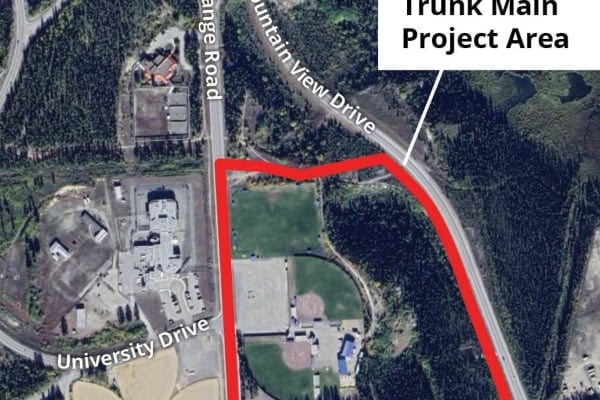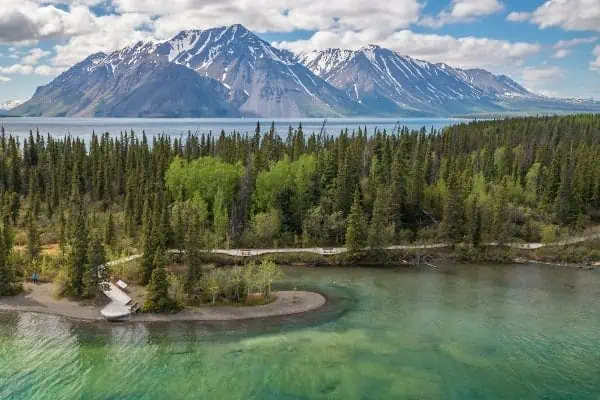Located on the northeastern corner of Ellesmere Island in Nunavut, Quttinirpaaq National Park is Canada’s northernmost national park. Until recently it was virtually inaccessible to your average earthling.
Quttinirpaaq just became a bit more reachable with the completion of a partnership project between Parks Canada and Google Street View, which aims to increase access to remote locations in Canada through Google Street View. Now that the park has gone online, Canadians can experience the extreme North with the click of a mouse.
“There’s a sense that Canadians and the world, as a whole, are becoming more aware of the Arctic,” said Emma Upton, park manager for Quttinirpaaq National Park.
“It’s a kind of recognition and it’s an opportunity to bring a piece of the North to the South.”
The project for Quttinirpaaq started in 2015. The crew was on the ground for five days in the summer of 2016. The content was reviewed in the summer of 2017, and all of the content was published in October 2017.
Upton spent a day guiding a crew that was photographing Quttinirpaaq with an S 360 Google Trekker Camera, in 2016. “It took a fair bit of planning to get to that latitude. It was a bit mind-boggling.
“The terrain isn’t the easiest to walk. A lot of it is tundra or rocky landscape, and the cameraman was so excited to be there that he was getting distracted,” she said with a laugh. “We picked spots to photograph that we know are of interest.”
She said that while the unpredictable weather was a concern, at first, everything worked out. “We were so fortunate … everything arrived on time, the sun started to shine on the day that the crew showed up. Ellesmere Island that week was especially spectacular.”
Upton has been in Nunavut since 2014. She began her northern journey with Parks Canada in 2001, at the Yukon’s Kluane National Park, and sees the Quttinirpaaq project as one of the highlights of her career. “It was really fun to plan something way ahead of time and engage communities,” said Upton.
The communities of Resolute Bay and Grise Fiord are the gateway to Quttinirpaaq National Park, and the participation of local residents in the project, encouraged by Parks Canada, sets it apart from other Google Maps endeavours.
Grise Fiord has a population of roughly 130, and Resolute Bay has a population of roughly 200. Advance screenings of the Google Maps launch were held in both communities so that residents could give their input before the information went online.
Organizers said that there were about 40 residents present at the advance launch in Grise Fiord and only slightly fewer in attendance at Resolute Bay, which is a big turnout taking population size into account.
“Residents were very very excited about this. It really put the geography into perspective, and we got lots of positive feedback. It was very meaningful,” said Upton. Upton’s hope is that more people will be drawn to visit Quttinirpaaq, once they’ve had a taste of it through Google Maps.
“Although it can be difficult to get here, we want to get people dreaming about visiting, increase the appreciation that people have for Canada’s North, and change some of the preconceived notions that people have about the North.”
Quttinirpaaq is the farthest north that Google Street View has been, to date. Phil McComiskey—partnering, engagement and communications officer with the Parks Canada Nunavut Field Unit—thinks that all Canadians should consider experiencing Nunavut. “It is a part of our country [that] few Canadians are aware of, and even fewer go to see/experience.”
Yukoners shouldn’t write off a visit to Nunavut just because we live in the North, either. “The territory of Nunavut is very different from the Yukon, in culture and language, climate, and history,” he said.
For those with an interest in visiting, 25,000 Aeroplan points can get you to Resolute Bay from anywhere in Canada.
If you can’t afford to fly but love to cook, twice a year the Chef at the Top of the World project invites Canadians to express an interest in being a camp cook for a couple of weeks while experiencing the Far North.
“Heading to Nunavut and Quttinirpaaq means getting a better grasp of how vast Canada’s North really is—we live in a big country,” said McComiskey. “Quttinirpaaq is just beautiful. It’s remote, vast, and stark.
“Evidence of human activity, dating back thousands of years, is scattered throughout the landscape … it’s hard to miss when walking on the land! And, for all its starkness, it is surprisingly rich in flora and fauna.”
Established as a national park, in the year 2000, with the creation of Nunavut Territory, Quttinirpaaq means “top of the world” in Inuktitut. Covering 37,775 square kilometres (14,585 square miles), it’s the second-biggest park in Canada, after Wood Buffalo National Park. It’s the second most-northerly in the world after Northeast Greenland National Park.
More information about the collaboration between Google Street View and Parks Canada, as well as other sites that have been captured around the country, can be found at www.pc.gc.ca/en/multimedia/cartes-maps. All information about visiting the park and about volunteer opportunities can be found online at www.pc.gc.ca/quttinirpaaq. You can also follow Parks Canada on Facebook and Twitter.




